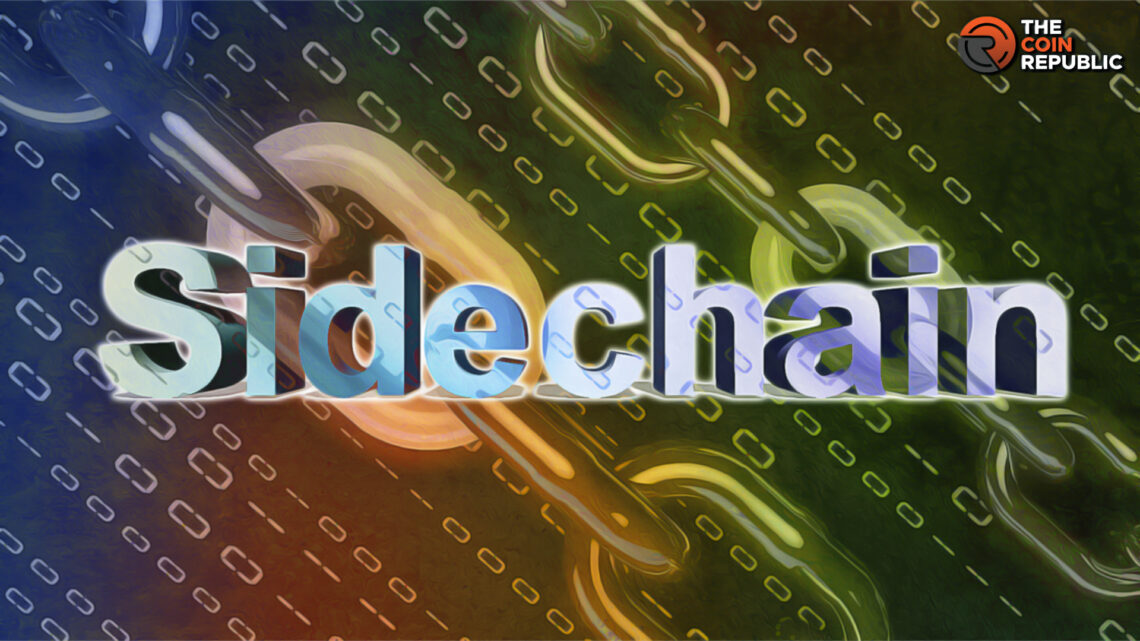- 1 Privacy and security concerns in blockchain led to the introduction of the concept of Sidechains into the crypto world.
- 2 It is a separate blockchain network linked to another blockchain through a two-way peg.
Bitcoin, the very first cryptocurrency, led to the widespread usage of blockchain technology in the crypto industry. With time, the technology expanded its roots to the fields of smart contracts and decentralized apps. Profound growth in traffic gave birth to challenges regarding privacy, security, and scalability. The introduction of sidechains, thus, mitigated these issues to an extent.
What is Sidechain?
A sidechain is a separate blockchain network linked with another blockchain, generally known as the mainnet or parent blockchain. The connection is established via a two-way peg, allowing the movement of assets without any second-party risk.
The concept of sidechain came into existence in October 2014, when Adam Back, the creator of HashCash introduced it to the crypto industry. Some other notable names who worked on the project are Mark Friedenbach, Luke Dashir, and Matt Corallo.
These chains hold their own consensus mechanism that makes them more secure. In case of a security breach, the mainnet remains secure. Drivechain, SmartBCH, RootStock, The Liquid Network, and Polygon are a few examples of sidechains.
How Sidechains Work
Sidechains offer a seamless exchange of assets faster and more securely. Transfer of digital assets and transactions to a separate chain speeds up the data processing, facilitating finality and verification without any issue of network congestion.
The separate consensus mechanism makes sidechains independent of the primary blockchain. Two-way pegs and smart contracts are two main components that enhanced the performance of sidechains in the crypto sector.
Two-way peg or blockchain bridge offers flawless transfer of digital assets between the primary and sidechains and vice versa. Smart contracts, on the other hand, are accountable for facilitating the connection to maintain a two-way peg.
The smart contract on the sidechain gets a notification each time an individual sends an asset to the output address and creates an equal number of digital assets. A smart contract automates the procedure and safeguards the movement of assets between the sidechains and the primary chain.
Sidechain’s Use Cases
The key purpose of a sidechain launch is to enhance the efficiency of the primary blockchain. Apart from this, the concept also addressed issues related to scalability, flexibility, functionality, and upgradability.
Operating separately from the main blockchain enhances the functionality of the parent blockchain. Flexibility is another main feature that mainly helps the developers in experimenting with new features and applications. Additionally, the security and stability of the primary blockchain is not compromised.
Another feature that made sidechains a favorite field of work for the developers is upgradability. Developers can modify and upgrade features without influencing the parent blockchain. In short, building and testing of networks and dApps become effortless with the use of sidechains.
The real-world application of sidechains can be seen in some of the popular blockchain projects like Polygon, RootStock, and Gnosis Chain.
Polygon is using an Ethereum sidechain, and Rootstock is using sidechains for Bitcoin smart contracts. Gnosis Chain is considered to be the very first Ethereum sidechain.
Potential And Flaws of Sidechains
Focusing on the advantages and disadvantages of sidechains, the network possesses a wide range of perks in terms of scalability and improved efficiency.
Faster, safer, and cheaper transactions are some of the key benefits of sidechains. Decongestion of the main blockchain thus enhances the overall functioning of the platform. Diversification is another feature that enhances the accessibility of assets from other blockchains.
The concept also holds a few flaws that need rectification. Sidechains are accountable for their security as no security is derived from the blockchain. Also, secondary chains or sidechains work with their own miners and possess limited security due to the lack of validator incentives. More centralization in comparison to the primary blockchain also degrades the effectiveness of sidechains in the crypto industry.
Conclusion
Sidechains hold the potential to revolutionize the presence of blockchain in the crypto universe. Seamless transfer of digital assets results in enhanced efficiency and transaction finality and this is done through smart contracts and a two-way peg. Scalability, flexibility, functionality, and upgradability are the main features of sidechains.
FAQs
What are sidechains?
A sidechain is a blockchain that interacts with another blockchain for seamless and faster transactions. The complete functioning of sidechains depends on two components which are a two-way peg and a smart contract.
What are the benefits of sidechains?
High-level scalability, flexibility, functionality, and upgradability are the major advantages of sidechains.
What are some examples of sidechains?
The concept of sidechains is applied in many crypto projects like Polygon, Drivechain, SmartBCH, RootStock, and Gnosis Chain.

With a background in journalism, Ritika Sharma has worked with many reputed media firms focusing on general news such as politics and crime. She joined The Coin Republic as a reporter for crypto, and found a great passion for cryptocurrency, Web3, NFTs and other digital assets. She spends a lot of time researching and delving deeper into these concepts around the clock, and is a strong advocate for women in STEM.


 Home
Home News
News






